Faculty Books
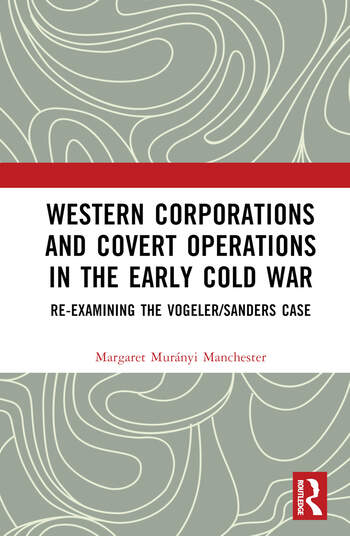
Western Corporations and Covert Operations in the early Cold War: Re-examining the Vogeler/Sanders Case
Margaret Manchester
Routledge | 2024
This book examines the Vogeler/Sanders espionage case that ruptured ties between the US and UK and Hungary in 1949, and analyses this as an example of Western covert operations in the early Cold War.
The work focuses on the 1949 case of ITT in Hungary, where two of its executives, the American Robert A. Vogeler and the Briton Edgar Sanders, were arrested by the secret police, tortured, forced to confess, put on a public show trial, and found guilty of espionage. This happened at a time that the US and the UK were cooperating in numerous operations to undermine the credibility of the communist regime and to encourage local resistance by “all means short of war.” Using the case as a lens to examine the dynamics of the early Cold War, the book integrates business history, diplomatic history and intelligence history, and thereby traces the impact of the case on Anglo-Hungarian, American-Hungarian, and Anglo-American relations during the critical period of 1949-1956. Vogeler’s case had a strong impact on the growing criticism of the Truman Administration’s containment policies and contributed to the demand for a more activist policy of ‘liberation of captive peoples’. His experiences also rallied the business community, especially trade associations such as the National Foreign Trade Council, the US Chamber of Commerce, and the National Association of Manufacturers, to support the anti-communist crusade both abroad and at home. Vogeler’s wife also waged a personal campaign to secure her husband’s release and exemplifies the activism of conservative and Catholic women who waged their own anti-communist crusade. The book thus tells the “rest of the story” often omitted in traditional works.
This book will be of much interest to students of Cold War history, intelligence studies and European political history.
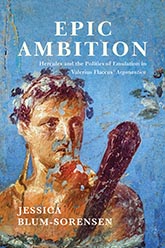
Epic Ambition: Hercules and the Politics of Emulation in Valerius Flaccus’ Argonautica
Jessica Blum-Sorensen
University of Wisconsin Press | 2023
By the time the Roman poet Valerius Flaccus wrote in the first century CE, the tale of Jason and his famous ship the Argo had been retold so often it was a byword for poetic banality. Why, then, did Valerius construct his epic Argonautica? In this innovative analysis, Jessica Blum-Sorensen argues that it was precisely the myth’s overplayed nature that appealed to Valerius, operating in and responding to a period of social and political upheaval. Seeking to comment obliquely on Roman reliance on mythic exempla to guide action and expected outcomes, there was no better vessel for his social and political message than the familiar Argo.
Focusing especially on Hercules, Blum-Sorensen explores how Valerius’ characters—and, by extension, their Roman audience—misinterpret exemplars of past achievement, or apply them to sad effect in changed circumstances. By reading such models as normative guides to epic triumph, Valerius’ Argonauts find themselves enacting tragic outcomes: effectively, the characters impose their nostalgic longing for epic triumph on the events before them, even as Valerius and his audience anticipate the tragedy awaiting his heroes. Valerius thus questions Rome’s reliance on the past as a guide to the present, allowing for doubt about the empire’s success under the new Flavian regime. It is the literary tradition’s exchange between triumphant epic and tragedy that makes the Argo’s voyage a perfect vehicle for Valerius’ exploration: the tensions between genres both raise and prohibit resolution of anxieties about how the new age—mythological or real—will turn out.
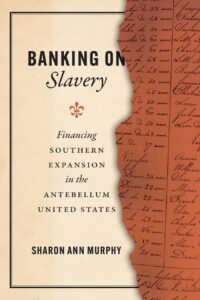
Banking on Slavery: Financing Southern Expansion in the Antebellum United States
Sharon Ann Murphy
The University of Chicago Press | 2023
It’s now widely understood that the fullest expression of nineteenth-century American capitalism was found in the structures of chattel slavery. It’s also understood that almost every other institution and aspect of life then was at least entangled with—and often profited from—slavery’s perpetuation. Yet as Sharon Ann Murphy shows in her powerful and unprecedented book, the centrality of enslaved labor to banking in the antebellum United States is far greater than previously thought.
Banking on Slavery sheds light on precisely how the financial relationships between banks and slaveholders worked across the nineteenth-century South. Murphy argues that the rapid spread of slavery in the South during the 1820s and ’30s depended significantly upon southern banks’ willingness to financialize enslaved lives, with the use of enslaved individuals as loan collateral proving central to these financial relationships. She makes clear how southern banks were ready—and, in some cases, even eager—to alter time-honored banking practices to meet the needs of slaveholders. In the end, many of these banks sacrificed themselves in their efforts to stabilize the slave economy. Murphy also details how banks and slaveholders transformed enslaved lives from physical bodies into abstract capital assets. Her book provides an essential examination of how our nation’s financial history is more intimately intertwined with the dehumanizing institution of slavery than scholars have previously thought.
Winner, 2024 Ralph Gomory Prize
Finalist, 2024 Hagley Prize
Winner, 2024 SHEAR Book Prize
Winner, 2024 Williams Prize
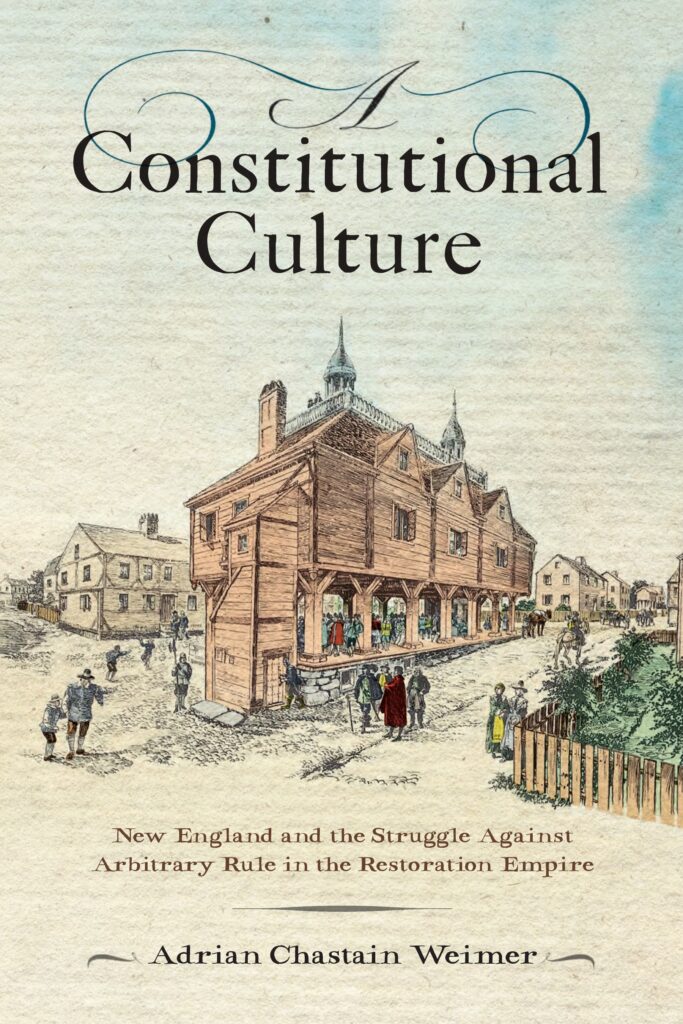
A Constitutional Culture: New England and the Struggle Against Arbitrary Rule in the Restoration Empire
Adrian Chastain Weimer
University of Pennsylvania Press | 2023
In A Constitutional Culture, Adrian Chastain Weimer uncovers the story of how, more than a hundred years before the American Revolution, colonists pledged their lives and livelihoods to the defense of local political institutions against arbitrary rule.
With the return of Charles II to the English throne in 1660, the puritan-led colonies faced enormous pressure to conform to the crown’s priorities. Charles demanded that puritans change voting practices, baptismal policies, and laws, and he also cast an eye on local resources such as forests, a valuable source of masts for the English navy. Moreover, to enforce these demands, the king sent four royal commissioners on warships, ostensibly headed for New Netherland but easily redirected toward Boston. In the face of this threat to local rule, colonists had to decide whether they would submit to the commissioners’ authority, which they viewed as arbitrary because it was not accountable to the people, or whether they would mobilize to defy the crown.
Those resisting the crown included not just freemen (voters) but also people often seen as excluded or marginalized such as non-freemen, indentured servants, and women. Together they crafted a potent regional constitutional culture in defiance of Charles II that was characterized by a skepticism of metropolitan ambition, a defense of civil and religious liberties, and a conviction that self-government was divinely sanctioned. Weimer shows how they expressed this constitutional culture through a set of well-rehearsed practices—including fast days, debates, committee work, and petitions. Equipped with a ready vocabulary for criticizing arbitrary rule, with a providentially informed capacity for risk-taking, and with a set of intellectual frameworks for divided sovereignty, the constitutional culture that New Englanders forged would not easily succumb to an imperial authority intent on consolidating its power.
Winner, 2024 Colonial Society of Massachusetts John Winthrop Prize
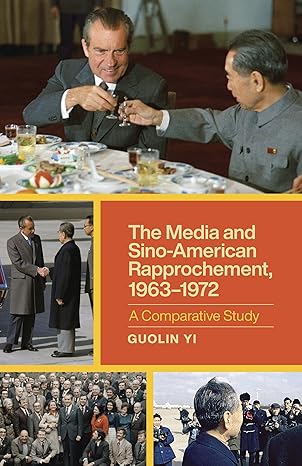
The Media and Sino-American Rapprochement, 1963–1972: A Comparative Study
Guolin Yi
Louisiana State University Press | 2020
The Media and Sino-American Rapprochement, 1963–1972 analyzes how the media in both countries shaped public perceptions of the changing relations between China and the United States in the decade prior to Richard Nixon’s visit to Beijing.
This book offers the first systematic study of Cankao Xiaoxi (Reference News), an internal Chinese newspaper that carried relatively objective stories the Xinhua News Agency translated from world news media for circulation among Communist cadres. As the main channel for the cadres to learn about the outside world, this newspaper provides a window into China’s evolving foreign policy, including the reception of signals from the Nixon administration. Yi compares this internal communications channel with the public accounts contained in the more widely circulated newspaper People’s Daily, a chief propaganda outlet of the Chinese Communist Party (CCP) directed at its own people and China watchers all over the world. A third level of communication emerges in classified CCP instructions and government documents. By approaching the Chinese communication system on three levels—internal, public, and classified—Yi’s analysis demonstrates how people at different positions in the political hierarchy accessed varying types of information, allowing him to chart the development of Beijing’s approach to the U.S. government.
In a corresponding analysis of the defining features of American reporting on China, Yi considers the impact of government-media relationships in the United States during the Cold War. Alongside prominent magazines and newspapers, particularly the New York Times and the Washington Post in their differing coverage of key events, Yi discusses television networks, which proved vital for promoting the success of Ping-Pong Diplomacy and the impact of Nixon’s visit in 1972.
With its comparative study of news outlets in the two countries, The Media and Sino-American Rapprochement, 1963–1972 presents a thorough and comprehensive perspective on the role of the media in influencing domestic Chinese and American public opinion during a critical decade.
Winner, 2022 Association of Chinese Professors of Social Sciences in the United States (ACPSS) Research Award.
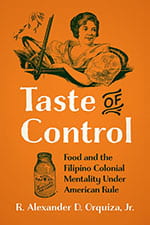
Taste of Control: Food and the Filipino Colonial Mentality under American Rule
R. Alexander D. Orquiza, Jr.
Rutgers University Press | 2020
Filipino cuisine is a delicious fusion of foreign influences, adopted and transformed into its own unique flavor. But to the Americans who came to colonize the islands in the 1890s, it was considered inferior and lacking in nutrition. Changing the food of the Philippines was part of a war on culture led by Americans as they attempted to shape the islands into a reflection of their home country.
Taste of Control tells what happened when American colonizers began to influence what Filipinos ate, how they cooked, and how they perceived their national cuisine. Food historian René Alexander D. Orquiza, Jr. turns to a variety of rare archival sources to track these changing attitudes, including the letters written by American soldiers, the cosmopolitan menus prepared by Manila restaurants, and the textbooks used in local home economics classes. He also uncovers pockets of resistance to the colonial project, as Filipino cookbooks provided a defense of the nation’s traditional cuisine and culture.
Through the topic of food, Taste of Control explores how, despite lasting less than fifty years, the American colonial occupation of the Philippines left psychological scars that have not yet completely healed, leading many Filipinos to believe that their traditional cooking practices, crops, and tastes were inferior. We are what we eat, and this book reveals how food culture served as a battleground over Filipino identity.
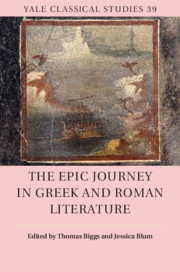
The Epic Journey in Greek and Roman Literature
Edited by Jessica Blum-Sorensen
Cambridge | 2019
This volume explores journeys across time and space in Greek and Latin literature, taking as its starting point the paradigm of travel offered by the epic genre. The epic journey is central to the dynamics of classical literature, offering a powerful lens through which characters, authors, and readers experience their real and imaginary worlds. The journey informs questions of identity formation, narrative development, historical emplotment, and constructions of heroism – topics that move through and beyond the story itself. The act of moving to and from ‘home’ – both a fixed point of spatial orientation and a transportable set of cultural values – thus represents a physical journey and an intellectual process. In exploring its many manifestations, the chapters in this collection reconceive the centrality of the epic journey across a wide variety of genres and historical contexts, from Homer to the moon.
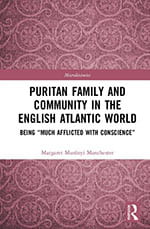
Puritan Family and Community in the English Atlantic World: Being “Much Afflicted with Conscience”
Margaret Murányi Manchester
Routeledge | 2019
Puritan Family and Community in the English Atlantic World examines the dynamics of marriage, family and community life during the “Great Migration” through the microhistorical study of one puritan family in 1638 Rhode Island.
Through studying the Verin family, a group of English non-conformists who took part in the “Great Migration”, this book examines differing approaches within puritanism towards critical issues of the age, including liberty of conscience, marriage, family, female agency, domestic violence, and the role of civil government in responding to these developments. Like other nonconformists who challenged the established Church of England, the Verins faced important personal dilemmas brought on by the dictates of their conscience even after emigrating. A violent marital dispute between Jane and her husband Joshua divided the Providence community and resulted, for the first time in the English-speaking colonies, in a woman’s right to a liberty of conscience independent of her husband being upheld. Through biographical sketches of the founders of Providence and engaging with puritan ministerial and prescriptive literature and female-authored petitions and pamphlets, this book illustrates how women saw their place in the world and considers the exercise of female agency in the early modern era.
Connecting migration studies, family and community studies, religious studies, and political philosophy, Puritan Family and Community in the English Atlantic World will be of great interest to scholars of the English Atlantic World, American religious history, gender and violence, the history of New England, and the history of family.
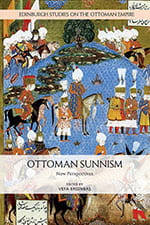
Ottoman Sunnism: New Perspectives
Edited by Vefa Erginbaş
Edinburgh University Press | 2019
Addressing the contested nature of Ottoman Sunnism from the 14th to the early 20th century, this book draws on diverse perspectives across the empire. Closely reading intellectual, social and mystical traditions within the empire, it clarifies the possibilities that existed within Ottoman Sunnism, presenting it as a complex, nuanced and evolving concept.
The authors in this volume rescue Ottoman Sunnism from an increasingly bipolar definition that seeks to present the Ottomans as enshrining a clearly defined orthodoxy, suppressing its contrasting heterodoxy. Challenging established notions that have marked the existing literature, the chapters contribute significantly not only to the ongoing debate on the Ottoman age of confessionalisation but also to the study of religion in the Ottoman context.
Explores Ottoman Sunnism from the earliest period of the empire to its end.
- Revisionist chapters question established paradigms on Ottoman Sunnism, offering complex and nuanced understandings of the subject
- Contributes to the ongoing debate regarding confessionalisation in the Ottoman Empire
- Explains and – where necessary – revises various understandings of Ottoman religion
- Reflects different perspectives across the Empire, particularly from the Balkans and central heartlands
- Relevant to historians who study religion in Europe and Asia in the early modern world, allowing for increased comparative insights
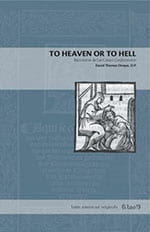
To Heaven or to Hell: Bartolomé de Las Casas’s Confesionario
David Thomas Orique O.P., Ph.D.
Penn State University Press | 2018
This volume is the first complete English translation and annotated study of Bartolomé de Las Casas’s important and provocative 1552 treatise commonly known as the Confesionario or Avisos y reglas. A text that generated controversy, like Las Casas’s more famous Brevísima relación, the Confesionario outlined a strikingly novel and arguably harsh use of confession for those administering the sacrament to conquistadores, encomenderos, slaveholders, settlers, and others who had harmed the indigenous people, thus using magisterial authority and jurisdictional power to promote restitution.
David Orique addresses how, from 1516 to 1547, Las Casas subscribed to and wrote about the theory and practice of the doctrine of restitution. He then presents the specific historical context of the development of the initial manuscript of the Confesionario in 1547 as Doce reglas (Twelve Rules), which later became the augmented Confesionario manuscript. Orique’s commentary on the 1552 Confesionario treatise highlights how Las Casas’s Argumento, and its approval by theologians, legitimates his work. Orique outlines the various guidelines proposed to confessors to identify, investigate, and seek restitution from offending Spaniards based on their possessions and circumstances. He also explores Las Casas’s use of the Thomistic tripartite scheme of divine, natural, and human law.With insightful analysis and commentary accompanied by an eminently readable translation, To Heaven or to Hell will be especially useful to students and scholars of Latin American colonial history, early modern religion, and Catholic studies.
With insightful analysis and commentary accompanied by an eminently readable translation, To Heaven or to Hell will be especially useful to students and scholars of Latin American colonial history, early modern religion, and Catholic studies.
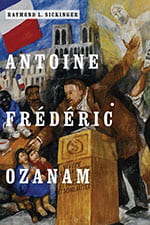
Antoine Frédéric Ozanam
Raymond L. Sickinger
The University of Notre Dame Press | 2017
Raymond Sickinger’s biography of Antoine Frédéric Ozanam is more than a chronological account of Ozanam’s relatively brief but extraordinary life. It is also a comprehensive study of a man who touched many lives as a teacher, writer, and principal founder of the Society of St. Vincent de Paul.
Ozanam’s life encompassed a particularly turbulent time in French history, and he was a witness to two major political upheavals—the overthrow of the Bourbon dynasty that brought Louis Philippe to power in 1830, and the end of Louis Philippe’s “Bourgeois Monarchy” as a result of the 1848 Revolutions. This book examines Ozanam’s life in a variety of ways. First, it explores the various roles he played throughout his life—son, sibling, student, member of and an inspiration for the Society of St. Vincent de Paul, spouse and father, scholar, and spokesperson for the common people. Second, it examines the lessons he learned in his life, including the importance of friendship, the meaning of solidarity, and the role and purpose of suffering, among many others that he shares with those who study his thought and work. It concludes with an account of Ozanam’s enduring legacy.
Antoine Frédéric Ozanam feared that he would not have a fruitful career, but his legacy remains a powerful testimony to his greatness. This book will interest scholars wishing to know more about Ozanam and the period in which he lived, as well as a wider audience including those who are aware or are members of the Society of St. Vincent de Paul.
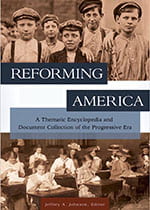
Reforming America: A Thematic Encyclopedia and Document Collection of the Progressive Era
Edited by Jeffrey A. Johnson
ABC-CLIO | 2017
Winner, American Library Association 2018 List of Best Historical Materials
Presenting a detailed look at the individuals, themes, and moments that shaped this important Progressive Era in American history, this valuable reference spans 25 years of reform and provides multidisciplinary insights into the period.
During the Progressive Era, influential thinkers and activists made efforts to improve U.S. society through reforms, both legislative and social, on issues of the day such as working conditions of laborers, business monopolies, political corruption, and vast concentrations of wealth in the hands of a few. Many Progressives hoped for and tirelessly worked toward a day when all Americans could take full advantage of the economic and social opportunities promised by U.S. society.
This two-volume work traces the issues, events, and individuals of the Progressive Era from approximately 1893 to 1920. The entries and primary sources in this set are grouped thematically and cover a broad range of topics regarding reform and innovation across the period, with special attention paid to important topics of race, class, and gender reform and reformers. The volumes are helpfully organized under five categories: work and economic life; social and political life; cultural and religious life; science, literature, and the arts; and sports and popular culture.
Features:
- Offers more than 200 entries on the most significant people, places, themes, and moments of the era in one collected two-volume work
- Presents authoritative information by scholars and specialists in the period
- Enables readers to gain a sense of the times through an understanding of the problems, viewpoints, and approaches that dominated the day
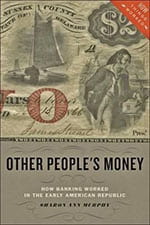
Other People’s Money: How Banking Worked in the Early American Republic
Sharon Ann Murphy
Johns Hopkins University Press | 2017
Pieces of paper that claimed to be good for two dollars upon redemption at a distant bank. Foreign coins that fluctuated in value from town to town. Stock certificates issued by turnpike or canal companies—worth something… or perhaps nothing. IOUs from farmers or tradesmen, passed around by people who could not know the person who first issued them. Money and banking in antebellum America offered a glaring example of free-market capitalism run amok—unregulated, exuberant, and heading pell-mell toward the next “panic” of burst bubbles and hard times.
In Other People’s Money, Sharon Ann Murphy explains how banking and money worked before the federal government, spurred by the chaos of the Civil War, created the national system of US paper currency. Murphy traces the evolution of banking in America from the founding of the nation, when politicians debated the constitutionality of chartering a national bank, to Andrew Jackson’s role in the Bank War of the early 1830s, to the problems of financing a large-scale war. She reveals how, ultimately, the monetary and banking structures that emerged from the Civil War also provided the basis for our modern financial system, from its formation under the Federal Reserve in 1913 to the present.
Touching on the significant role that numerous historical figures played in shaping American banking—including Alexander Hamilton, James Madison, Benjamin Franklin, Henry Clay, Daniel Webster, and Louis Brandeis—Other People’s Money is an engaging guide to the heated political fights that surrounded banking in early America as well as to the economic causes and consequences of the financial system that emerged from the turmoil. By helping readers understand the financial history of this period and the way banking shaped the society in which ordinary Americans lived and worked, this book broadens and deepens our knowledge of the Early American Republic.
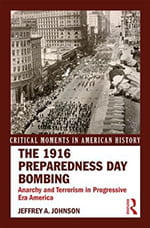
The 1916 Preparedness Day Bombing: Anarchy and Terrorism in Progressive Era America
Jeffrey A. Johnson
Routledge | 2017
This book places the 1916 San Francisco Preparedness Day Bombing within the broader context of American radicalism and isolationism during the Progressive Era. A concise narrative and key primary documents offer readers an introduction to this episode of domestic violence and the subsequent, sensationalized trial that followed. The dubious conviction of a local labor organizer raised serious questions about political extremism, pluralistic ideals, and liberty in the United States that continue to resonate in the twenty-first century.
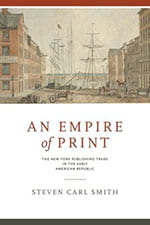
An Empire of Print: The New York Publishing Trade in the Early American Republic
Steven Carl Smith
Penn State University Press | 2017
Home to the so-called big five publishers as well as hundreds of smaller presses, renowned literary agents, a vigorous arts scene, and an uncountable number of aspiring and established writers alike, New York City is widely perceived as the publishing capital of the United States and the world. This book traces the origins and early evolution of the city’s rise to literary preeminence.
Through five case studies, Steven Carl Smith examines publishing in New York from the post–Revolutionary War period through the Jacksonian era. He discusses the gradual development of local, regional, and national distribution networks, assesses the economic relationships and shared social and cultural practices that connected printers, booksellers, and their customers, and explores the uncharacteristically modern approaches taken by the city’s preindustrial printers and distributors. If the cultural matrix of printed texts served as the primary legitimating vehicle for political debate and literary expression, Smith argues, then deeper understanding of the economic interests and political affiliations of the people who produced these texts gives necessary insight into the emergence of a major American industry. Those involved in New York’s book trade imagined for themselves, like their counterparts in other major seaport cities, a robust business that could satisfy the new nation’s desire for print, and many fulfilled their ambition by cultivating networks that crossed regional boundaries, delivering books to the masses.
A fresh interpretation of the market economy in early America, An Empire of Print reveals how New York started on the road to becoming the publishing powerhouse it is today.

Samurai to Soldier: Remaking Military Service in Nineteenth-Century Japan
D. Colin Jaundrill
Cornell University Press | 2016
In Samurai to Soldier, D. Colin Jaundrill rewrites the military history of nineteenth-century Japan. In fifty years spanning the collapse of the Tokugawa shogunate and the rise of the Meiji nation-state, conscripts supplanted warriors as Japan’s principal arms-bearers. The most common version of this story suggests that the Meiji institution of compulsory military service was the foundation of Japan’s efforts to save itself from the imperial ambitions of the West and set the country on the path to great power status. Jaundrill argues, to the contrary, that the conscript army of the Meiji period was the culmination—and not the beginning—of a long process of experimentation with military organization and technology.
Jaundrill traces the radical changes to Japanese military institutions, as well as the on-field consequences of military reforms in his accounts of the Boshin War (1868–1869) and the Satsuma Rebellions of 1877. He shows how pre-1868 developments laid the foundations for the army that would secure Japan’s Asian empire.

The Land Shall Be Deluged in Blood: A New History of the Nat Turner Revolt
Patrick H. Breen
Oxford University Press | 2015
On the evening of August 21, 1831, Nat Turner and six men launched their infamous rebellion against slaveholders. The rebels swept through Southampton County, Virginia, recruiting slaves to their ranks and killing nearly five dozen whites-more than had ever been killed in any slave revolt in American history. Although a hastily assembled group of whites soon suppressed the violence, its repercussions had far-reaching consequences.
In The Land Shall Be Deluged in Blood, Patrick H. Breen uses the dramatic events in Southampton to explore the terrible choices faced by members of the local black community as they considered joining the rebels, a choice that would likely cost them their lives, supporting their masters, or somehow avoiding taking sides. Combining fast-paced narrative with rigorous analysis, Breen shows how, as whites regained control, slaveholders created an account of the revolt that saved their slaves from white retribution, the most dangerous threat facing the slaveholders’ human property. By probing the stories slaveholders told that allowed them to get non-slaveholders to protect slave property, The Land Shall Be Deluged in Blood reveals something surprising about both the fragility and power of slavery.
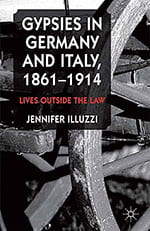
Gypsies in Germany and Italy, 1861-1914: Lives Outside the Law
Jennifer Illuzzi
Palgrave Macmillan | 2014
By the early 20th century, Gypsies in Germany and Italy were pushed outside the national community and subjected to the arbitrary whims of executive authorities. This book offers an account of these exclusionary policies and their links to the rise of nationalism, liberalism, and the modern bureaucratic state.
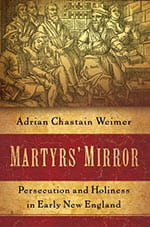
Martyrs’ Mirror: Persecution and Holiness in Early New England
Adrian Chastain Weimer
Oxford University Press | 2011
This book examines the folklore of martyrdom in seventeenth-century Protestant culture, exploring how Congregationalists, Separatists, Antinomians, Baptists, and Quakers imagined themselves within biblical and historical narratives of persecution. Memories of martyrdom, especially John Foxe’s stories of the Protestants killed during the reign of Queen Mary in the mid-sixteenth century, were central to a model of holiness and political legitimacy. This examination of the notions of persecution and martyrdom as they move in and out of the sermons, letters, diaries, and poetry of the period reveals that the idea of the true church as a persecuted church infused colonial identity and articulations of difference. Congregationalists saw outsider groups as persecuting agents of Antichrist, and Antinomians, Quakers, and Baptists drew courage and models from historic martyrs as they resisted Congregationalist authority. Though contested, the martyrs formed a shared heritage, and fear of being labeled a persecutor, or even admiration for a cheerful sufferer, could serve to inspire religious tolerance. The sense of being uniquely marginalized also allowed colonists to avoid responsibility for aggression against Algonquian tribes. Surprisingly, those wishing to defend maltreated Christian Native Americans wrote their history as a continuation of the persecutions of the true church. This analysis of the historical imagination of martyrdom contributes to our understanding of the meaning of suffering and holiness in English Protestant culture, of the significance of religious models to debates over political legitimacy, and of the cultural history of persecution and religious liberty.
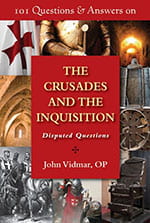
101 Questions and Answers on the Crusades and the Inquisition: Disputed Questions
John Vidmar, O.P.
Paulist Press | 2013
Takes an honest look at two controversial events in Christian history, showing in what ways the seemingly different historical events are related, and undoing several misconceptions about both.
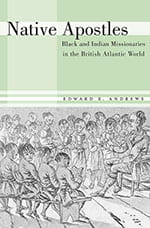
Native Apostles: Black and Indian Missionaries in the British Atlantic World
Edward E. Andrews
Harvard University Press | 2013
As Protestantism expanded across the Atlantic world in the seventeenth and eighteenth centuries, most evangelists were not white Anglo-Americans, as scholars have long assumed, but members of the same groups that missionaries were trying to convert. Native Apostles offers one of the most significant untold stories in the history of early modern religious encounters, marshalling wide-ranging research to shed light on the crucial role of Native Americans, Africans, and black slaves in Protestant missionary work. The result is a pioneering view of religion’s spread through the colonial world.
From New England to the Caribbean, the Carolinas to Africa, Iroquoia to India, Protestant missions relied on long-forgotten native evangelists, who often outnumbered their white counterparts. Their ability to tap into existing networks of kinship and translate between white missionaries and potential converts made them invaluable assets and potent middlemen. Though often poor and ostracized by both whites and their own people, these diverse evangelists worked to redefine Christianity and address the challenges of slavery, dispossession, and European settlement. Far from being advocates for empire, their position as cultural intermediaries gave native apostles unique opportunities to challenge colonialism, situate indigenous peoples within a longer history of Christian brotherhood, and harness scripture to secure a place for themselves and their followers.
Native Apostles shows that John Eliot, Eleazar Wheelock, and other well-known Anglo-American missionaries must now share the historical stage with the black and Indian evangelists named Hiacoomes, Good Peter, Philip Quaque, John Quamine, and many more.
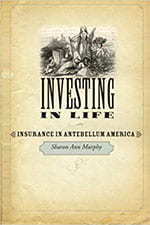
Investing in Life: Insurance in Antebellum America
Sharon Ann Murphy
Johns Hopkins University Press | 2010
Winner, Hagley Prize in Business History, Hagley Museum and Library and the Business History Conference
Investing in Life considers the creation and expansion of the American life insurance industry from its early origins in the 1810s through the 1860s and examines how its growth paralleled and influenced the emergence of the middle class.
Using the economic instability of the period as her backdrop, Sharon Ann Murphy also analyzes changing roles for women; the attempts to adapt slavery to an urban, industrialized setting; the rise of statistical thinking; and efforts to regulate the business environment. Her research directly challenges the conclusions of previous scholars who have dismissed the importance of the earliest industry innovators while exaggerating clerical opposition to life insurance.
Murphy examines insurance as both a business and a social phenomenon. She looks at how insurance companies positioned themselves within the marketplace, calculated risks associated with disease, intemperance, occupational hazard, and war, and battled fraud, murder, and suicide. She also discusses the role of consumers—their reasons for purchasing life insurance, their perceptions of the industry, and how their desires and demands shaped the ultimate product.
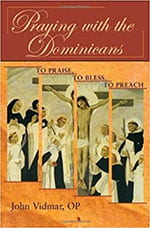
Praying with the Dominicans
John Vidmar, O.P.
Paulist Press | 2008
A compilation of writings, from the foundation of the Order to the present day, that will assist people in learning how to pray in the Dominican tradition.
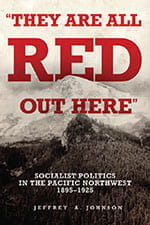
“They Are All Red Out Here”: Socialist Politics in the Pacific Northwest, 1895-1925
Jeffrey A. Johnson
University of Oklahoma Press | 2008
One of early-twentieth-century America’s most fertile grounds for political radicalism, the Pacific Northwest produced some of the most dedicated and successful socialists the country has ever seen. As a radicalized labor force emerged in mining, logging, and other extractive industries, socialists employed intensive organizational and logistical skills to become an almost permanent third party that won elections and shook the confidence of establishment rivals. At the height of Socialist Party influence just before World War I, a Montana member declared, “They are all red out here.”
In this first book to fully examine the development of the American Socialist Party in the Northwest, Jeffrey A. Johnson draws a sharp picture of one of the most vigorous left-wing organizations of this era. Relying on party newspapers, pamphlets, and correspondence, he allows socialists to reveal their own strategies as they pursued their agendas in Washington, Oregon, Idaho, and Montana. And he explores how the party gained sizable support in Butte, Spokane, and other cities seldom associated today with left-wing radicalism.
“They Are All Red Out Here” employs recent approaches to labor history by restoring rank-and-file workers and party organizers as active participants in shaping local history. The book marks a major contribution to the ongoing debate over why socialism never grew deep roots in American soil and no longer thrives here. It is a work of political and labor history that uncovers alternative social and political visions in the American West.

The Catholic Church through the Ages
John Vidmar, O.P.
Paulist Press | 2005
This one-volume survey of the history of the Catholic Church–from its beginning through the pontificate of John Paul II–explains the Church’s progress by using Christopher Dawson’s division of the Church’s history into six distinct “ages,” or 350-400 year periods of time.

English Catholic Historians and the English Reformation
John Vidmar, O.P.
Sussex Academic Press | 2005
For almost 400 years, Roman Catholics have been writing about the English Reformation, but their contributions have been largely ignored by the scholarly world and the reading public. Thus the myths of corrupt monasteries, a “Bloody” Mary, and a “Good” Queen Bess have established themselves in the popular mind. John Vidmar re-examines this literature systematically from the time of the Reformation itself, to the early 1950s, when Philip Hughes produced his monumental Reformation in England. The author introduces all the major historians (and many lesser lights) who have tackled this issue, including: Nicholas Sanders, Charles Dodd, John Lingard, Lord Acton, Aidan Gasquet, and Hilaire Belloc.
English Catholic Historians and the English Reformation, 1585–1954 supplies information long missing from the Reformation Debate. In exploring the divergent opinions of Catholic historians, John Vidmar offers a critique of the body of Catholic writing and discovers that, quite simply, there is no Catholic “version” of the English Reformation. By evaluating Catholic historical writing as a whole, he reaches conclusions which have not been hitherto possible by treating individual historians. Patterns and directions of Catholic thought over four centuries are illuminated, and set a basis for a new “revisionism” on the Reformation in England.
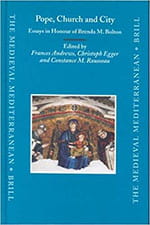
Pope, Church and City: Essays in Honour of Brenda M. Bolton
Edited by Constance M. Rousseau
Brill | 2004
This illustrated volume is an articulate series of essays by distinguished authors on themes which are central to the work of Brenda Bolton as a scholar and teacher: Innocent III, the city of Rome, the late medieval Church and the urban context of the Italian peninsula in the twelfth to fourteenth centuries. The essays combine groundbreaking new analyses with careful reading of the sources to demonstrate the vibrancy of the study of the ecclesiastical and social history of the Mediterranean in the late Middle Ages.
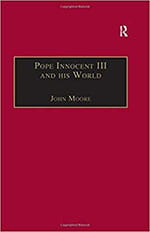
Pope Innocent III and His World
Edited by Constance M. Rousseau
Routledge | 1999
The year 1998 was the 800th anniversary of the election of Lotario dei Conti di Segni as Pope. At 37, he was one of the youngest men ever to hold that office, and he was to become one of the most important popes in the entire history of Christianity. Together with Gregory VII, he was one of the two most important popes of the Middle Ages. In his efforts to promote Christianity and defend it from its enemies, Innocent played a role in the history of almost every part of Europe and its environs. He initiated both the ill-fated Fourth Crusade, that ended up sacking the Greek Christian city of Constantinople, and the Albigensian Crusade, that devastated major parts of Southern France and led to its submission to the French crown. He promoted the crusades that accomplished the conquest and conversion of the pagans of the south Baltic coast. These papers are taken from the interdisciplinary conference, Pope Innocent III and his World, held in May 1997 at the Hofstra University Cultural Center, New York.
History and Classics Department
Office Hours: 8:30 am to 4:00 pm
Ruane Center for the Humanities Room 137
401-865-2193
History2@providence.edu





